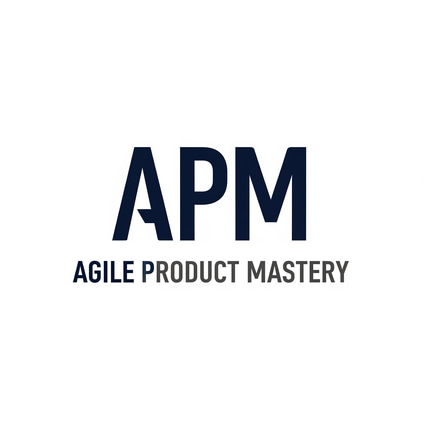The Invisible Leadership Challenge: Achieving Success Without Direct Authority
Learn how to effectively lead and influence cross-functional teams as a product manager without having formal authority.
Written by: Matt Gregory - Founder Agile Product Mastery
3/29/20253 min read


Imagine yourself in charge of a product's success but unable to direct the team working on it. The world of product management is here. When you own results but can't enforce them, it's frustrating. You're not alone.
Instead of having command, the product manager has influence. In this article, you will find tried-and-tested methods for leading teams, coordinating stakeholders, and achieving product success without exerting direct control.
Why Product Owners and Product Managers struggle with limited authority
Every product owner's or product manager's job is to strike a balance between the needs of the company, the technology they utilize, and the customers. On the other hand, they are not often directly reported to or given influence over execution, unlike most managers. Alignment, trust, and persuasion are their tools of choice.
The Core Challenge:
Marketing, sales, engineering, and design all have competing goals.
At times, the objectives of executives, clients, and teammates are at odds with one another.
The product manager lacks the authority to make decisions, yet they still require support to put their vision into action.
If you don't have any official power, how can you check how well your team is doing? Here are some practical steps.
1. Master the art of influence
A powerful ability of yours is the ability to influence others. Great product managers lead by example and inspire rather than micromanage.
Develop your influence by becoming an expert in your product, market, and customers.
Communicate with clarity and conviction: Write captivating narratives supported by data.
Showcase quick wins: quick victories, build momentum, and trust.
Be prepared: Make sure you're the most knowledgeable and assured person in the room by preparing ahead of time.
Take this scenario: A product manager at a SaaS company used customer feedback to convince engineers to prioritize a small UX issue. What was the outcome? A 15% drop in churn in the following quarter.
2. Develop Strong Relationships Across Teams
Having connections is more valuable than having authority.
Understand team motivators: Design prioritizes usability, engineering values scalability, and sales are interested in revenue.
Celebrate team wins: Recognizing contributions fosters relationships.
Bridge Communication Gaps: Translate business needs into actionable technology requirements.
Informal Catch-Ups: Alignment and trust are enhanced through regular coffee conversations.
Practical Tip: Shadow different teams for a day to gain insights into their challenges.
3. Align Stakeholders for Data-Driven Decision-Making
Data, not opinions, should drive decision-making. Persuasion without authority becomes easier with data because it adds legitimacy.
Making Good Use of Data: Find out what customers want through surveys, interviews, and usability tests.
Product analytics: Monitor activation, customer retention, and feature uptake.
Benchmark: Use competitive benchmarking to back up your decisions with data from your sector.
Experiment: Subjectivity in discussions is eliminated by experimental A/B testing.
Pro Tip: Before having any major conversations, make sure you have a "Decision Brief" that is backed up by data. Conflicts are reduced to facts rather than politics.
4. Establish Goals and a Strategy
Ambiguity becomes your adversary when you lack authority. A well-defined product vision and roadmap serve as a north star, providing direction and alignment.
Align with business objectives: Guarantee that product objectives align with company objectives.
Prioritize ruthlessly: Stay laser-focused on tasks with a significant impact.
Show the trade-offs: Give reasons for selecting certain characteristics.
Keep stakeholders engaged by updating them on a regular basis.
Case Study: A product manager at a financial institution cut down on executive pushback to product decisions by 40% after instituting a quarterly review of the roadmap.
5. To execute, collaborate, not control.
Execution in product management is about collaborating, not dominating. Teams ought to be given authority and held responsible. Here are some effective methods for driving execution:
Facilitate, don't dictate: Drive discussions rather than impose opinions.
Use frameworks: Frameworks like Scrum, Kanban, and OKRs facilitate team alignment.
Create psychological safety: Foster an environment where people feel comfortable taking risks and providing constructive criticism.
Clarify roles and responsibilities: Establish responsibilities and measure success.
How could this be done? Instead of rushing a product release, work with engineers to develop a delivery strategy that takes impact and practicality into account.
The best product managers won't let a lack of authority deter them... they turn problems into opportunities.
So wrapping up:
Influence through expertise, communicate, and celebrate small wins.
Build strong relationships across teams.
Provide evidence to back your decisions and gain support from stakeholders.
A clear vision and roadmap are essential.
Teams should be empowered to execute, not controlled.
As a product manager, what obstacle do you find most difficult? What do you think?
Ready to master your Product Owner journey?
Grab your copy of Agile Product Mastery: The Product Owner's Playbook to Strategy, Execution & Influence and take your skills to the next level.
© Agile Product Mastery — Build a career that scales. Not one that burns out.
Powered by Baltimore Advisory Pty Ltd — ABN 97 678 312 475 — All rights reserved
Follow us on LinkedIn
